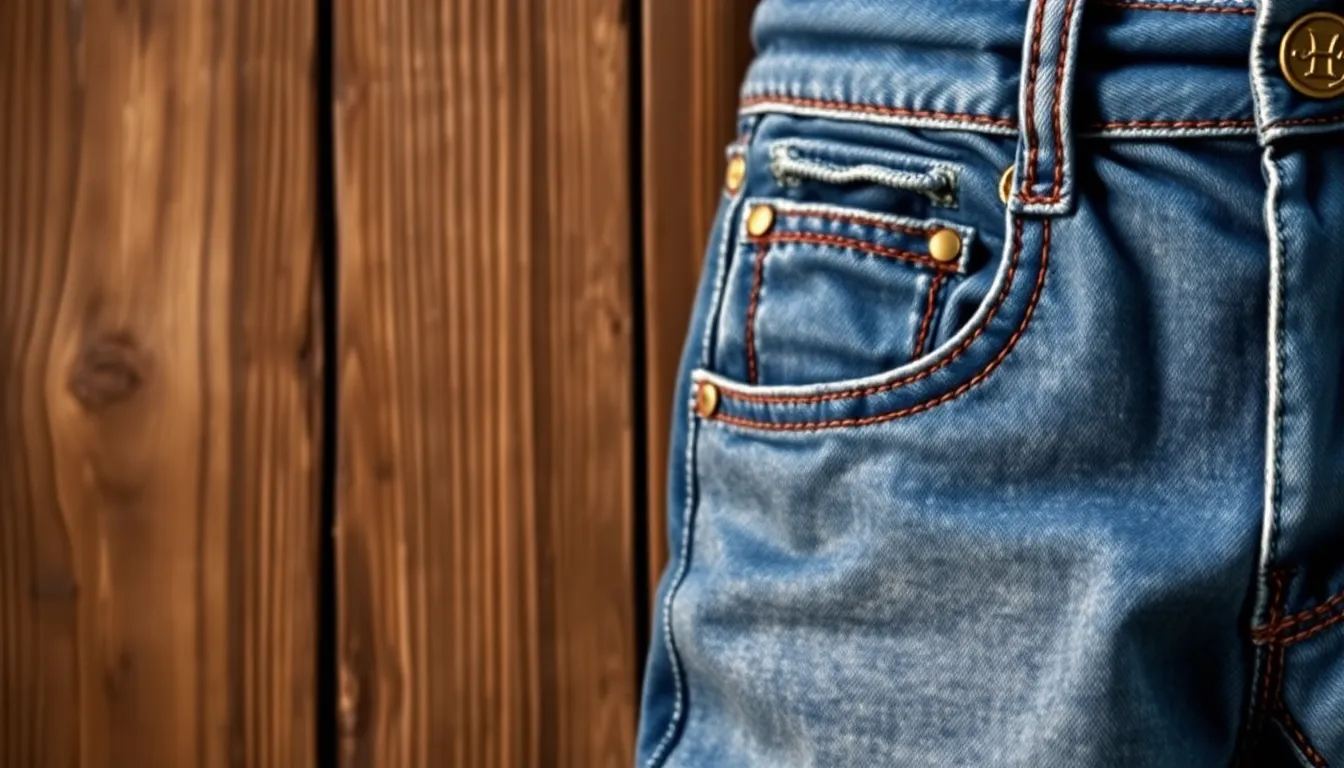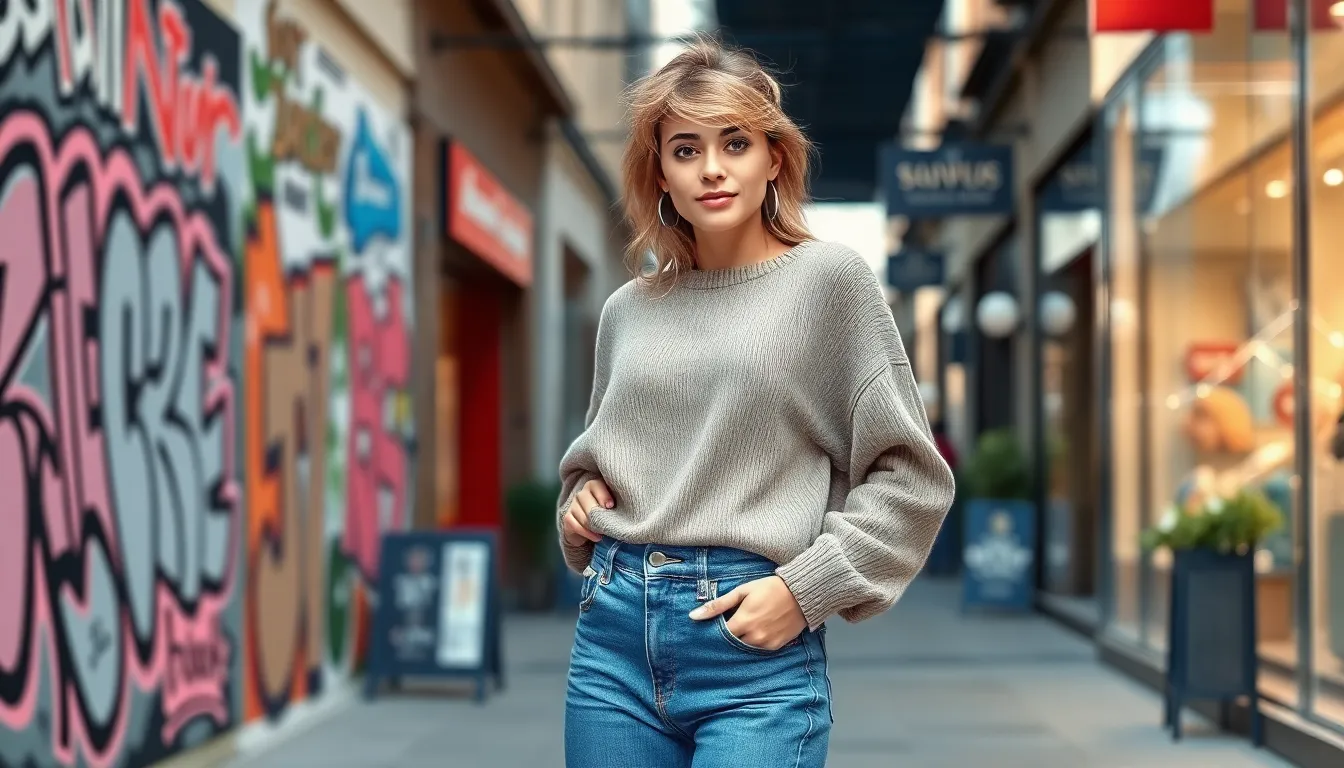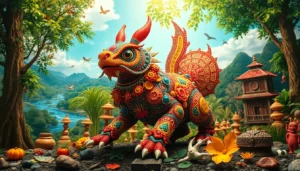Table of Contents
ToggleDenim’s not just a fabric; it’s a lifestyle. From classic blue jeans to stylish jackets, denim fashion has evolved into a staple that every wardrobe needs. It’s the kind of versatility that makes you wonder if it was woven by fashion gods. Whether you’re dressing up for a night out or keeping it casual on a Sunday brunch, denim’s got your back—literally!
But let’s face it, navigating the world of denim can feel like trying to find the perfect pair of jeans in a thrift store: overwhelming and slightly chaotic. With trends popping up faster than you can say “double denim,” it’s time to decode the denim dilemma. Get ready to embrace the fabric that’s as timeless as your favorite dad joke, and discover how to rock denim like a pro.
Overview of Denim Fashion
Denim fashion reflects a significant evolution, transforming from utilitarian fabric to a staple in modern wardrobes. Its versatility makes denim suitable for a range of occasions, whether casual gatherings or semi-formal events. Many individuals appreciate the comfort denim provides, making it an appealing choice for daily wear.
Trends in denim fluctuate rapidly, presenting challenges for consumers trying to stay stylish. Faded jeans, distressed styles, or tailored pieces offer various options, catering to different tastes. While skinny jeans dominated for years, relaxed fits, such as mom jeans and wide leg styles, have surged in popularity.
Innovations also shape denim fashion. Sustainable practices have gained traction, encouraging brands to produce eco-friendly options. From organic cotton to recycled fibers, these advancements promote a responsible approach to fashion.
Colors play a crucial role in denim choices. Classic indigo remains a favorite, yet options like black, white, and pastel shades attract attention. Each hue serves different stylistic purposes, allowing individuals to express themselves uniquely.
Accessories enhance denim outfits. Statement belts or unique footwear can elevate a simple look. Layering with jackets or oversized sweaters often adds dimension and personality.
Denim’s appeal spans demographics. Both younger and older generations embrace this fabric, demonstrating its timeless nature. Styles continue to evolve, offering fresh perspectives while honoring denim’s rich history.
Understanding how to incorporate denim into personal style is essential. Experimentation encourages growth, allowing individuals to discover what works best for them. By confidently integrating denim pieces, anyone can create a fashionable look that reflects their identity.
History of Denim Fashion

Denim fashion has a rich and transformative history that reflects cultural shifts and innovations.
Origins of Denim
Denim traces back to the late 17th century in France. It originated in Nîmes, where craftsmen created a durable twill fabric known as “serge de Nîmes,” which shortened over time to “denim.” In the 19th century, its popularity surged in the United States as workers sought sturdy clothing for labor-intensive jobs. Levi Strauss and Jacob Davis pioneered denim work pants in 1873, reinforcing pockets with rivets, highlighting functionality. This practical innovation laid the foundation for denim’s evolution from workwear to fashion.
Evolution Through Decades
The 1950s marked denim’s rise in popular culture, with Hollywood icons like Marlon Brando and James Dean sporting jeans. The 1960s embraced denim as a symbol of rebellion, especially within youth counterculture movements. By the 1970s, flared jeans gained popularity and entered mainstream fashion, while the 1980s saw acid-wash styles explode in popularity. The 1990s introduced baggy fits and high-waisted styles, showcasing diversity in denim options. In the 2000s, skinny jeans became the dominant silhouette, reflecting fashion’s cyclical nature and consumers’ evolving preferences.
Trends in Denim Fashion
Denim fashion continues to evolve, embracing new styles and preferences. Recent shifts reveal a strong movement towards comfort without sacrificing style.
Popular Styles and Cuts
Relaxed fits like mom jeans and wide-leg styles dominate the landscape. High-waisted options are also gaining traction, offering both a flattering silhouette and comfort. To attract various age groups, brands are reimagining classic styles, infusing modern elements into vintage cuts. Flared jeans, once a staple of past decades, are making a comeback, appealing to those who appreciate retro aesthetics. Distressed jeans provide an edgy look for casual outings, while tailored denim offers smart-casual alternatives for more dressed-up events.
Color and Wash Variations
Classic indigo remains a staple choice among denim enthusiasts. Black and white variations enhance versatility, allowing seamless transitions between casual and formal settings. Pastel shades are becoming increasingly popular, providing a soft, unique twist to traditional denim palettes. Acid washes and vintage-inspired finishes cater to consumers seeking nostalgia in their wardrobe. Eco-friendly washes that promote sustainability are gaining momentum, with brands adopting innovative techniques to minimize environmental impact.
Sustainability in Denim Fashion
Sustainability in denim fashion has gained significant attention. Eco-friendly practices challenge traditional production methods, encouraging environmentally responsible choices.
Eco-Friendly Brands
Several brands prioritize sustainable practices and produce denim using organic materials. For example, brands like 3×1, Nudie Jeans, and Levi’s embrace transparency in their sourcing and manufacturing processes. Each brand utilizes organic cotton, recycled materials, and water-saving techniques to minimize environmental impact. An increasing number of consumers prefer these eco-conscious options, contributing to a shift toward sustainable fashion.
Innovations in Denim Production
Innovations in denim production significantly enhance sustainability efforts. Laser technology, for instance, reduces water consumption during the distressing process. Furthermore, companies adopt closed-loop systems to recycle water used in production. Brands explore alternative dyeing methods that eliminate harmful chemicals, creating a cleaner final product. These advancements reflect the industry’s commitment to environmental responsibility while meeting consumer demands for stylish and sustainable options.
Denim continues to be a cornerstone of modern fashion. Its ability to adapt to changing trends while maintaining comfort and style makes it a favorite among fashion enthusiasts. As consumers seek sustainable options, the industry’s shift towards eco-friendly practices is promising.
With a variety of fits colors and accessories available, denim allows for endless creativity in personal style. Embracing both classic and contemporary looks ensures that denim will remain relevant for generations to come. The journey of denim from workwear to fashion statement reflects its timeless appeal and enduring versatility.




